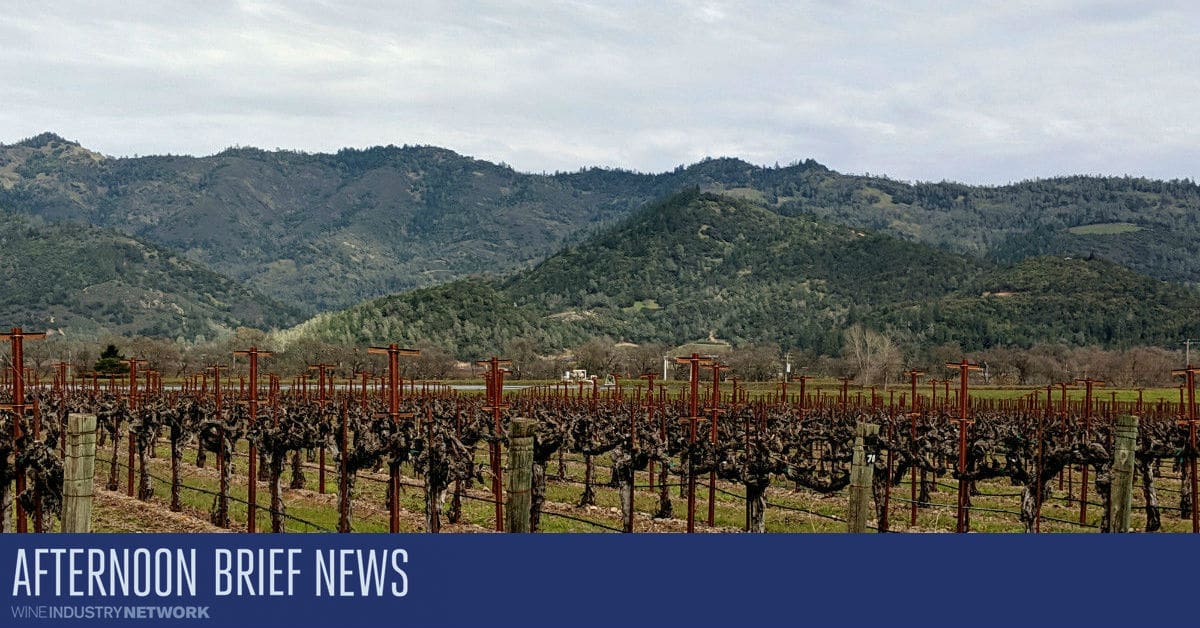By Paul Vigna
Matt Killman is a winemaker at Cool Climate Consulting in Petoskey, Mich., located in the Tip of the Mitt American Viticultural Area (AVA), the state’s newest growth area for wineries. Created in August 2016, Tip of the Mitt covers 2,760 square miles and is made up of glacial soils and bordered on three sides by water.

“If you had to choose ‘one line’ from me, I would tell you that I could be making wine anywhere in the world, but I chose to set down roots in Michigan because I believe it’s a wine region unlike any other,” says Killman.
May is Michigan Wine Month, and the numbers support Killman’s optimism. WineAmerica’s 2019 report showed Michigan on all three of the lobbying organization’s top 10 lists: wine production (6th), wineries (9th) and economic impact (10th). As we emerge from the COVID-19 pandemic, the state is poised to climb higher up those ladders.
 Positioning Michigan Wine Month in May serves several purposes, according to Emily Dockery, project/marketing director for the Michigan Wine Collaborative, one of the groups working to promote the state’s wine industry. It becomes the official start to tasting season and offers a chance to promote Michigan wine events to residents while also persuading out-of-staters to consider the state as a wine destination.
Positioning Michigan Wine Month in May serves several purposes, according to Emily Dockery, project/marketing director for the Michigan Wine Collaborative, one of the groups working to promote the state’s wine industry. It becomes the official start to tasting season and offers a chance to promote Michigan wine events to residents while also persuading out-of-staters to consider the state as a wine destination.
There are five wine trails across the state, anchored by the Lake Michigan Shore and Leelanau Peninsula trails. Also, five AVAs, including two on the lower end that border Lake Michigan and three at the northern tip.
An Upward Curve
Dockery says the state’s growth spurt started in 1991 with a remarkable 1,000-percent increase in wineries and a corresponding hike in vineyard acreage. She says, “we’re becoming more skilled at selecting and planting varieties that can thrive in the state, as well as importing experienced winemakers and educating the next generation of winemakers to be able to excel with our particular climate, culture of enology, and viticulture in Michigan.”

Amid the growth is an increasing diversity of grapes. Per Amy Birk, a viticulture professor at Lake Michigan College and president of the Michigan Grape Society, the current breakdown of acreage planted is: Concord (50 percent), vinifera (21.3), other native varieties such as Niagara and Norton (19.1), and hybrids (9.6). As of 2020, the most widely planted wine varieties in Michigan were Riesling (670 acres), Chardonnay (320), Pinot Gris (270) and Pinot Noir (250).
“This distribution changes depending on where you are in the state,” Birk says. Of the vinifera, Riesling is thriving up north and “the Old Mission and Leelanau peninsulas make world-class wines from the grapes grown there; same with Pinot Gris.” Farther south, she says, Cabernet Franc and Blaufrankisch are among the reds that have found a home.
Teaching the next generation
As growth continues, the push toward supplying the industry has become a year-round endeavor. Lake Michigan College’s wine and viticulture program, run by Director Michael Moyer, is in its seventh year. Students spend dozens of hours in the vineyard as well as in the fully licensed and bonded commercial teaching winery, Lake Michigan Vintners, housed in a new state-of-the-art facility.

Pingree Farms in Detroit is one example of the workforce development that Tom Smith, an extension specialist in agriculture and ag business at Michigan State, has been immersed in since 2009. Pingree Farms is a 501(c)3 nonprofit dedicated to neighborhood revitalization and youth education through urban agriculture. It’s one of many programs Smith has helped put together, combining apprenticeships and technical training through a project called VESTA (Viticulture Enology Science and Technology Alliance), which is funded through the National Science Foundation.
Some of the graduates have turned into industry leaders. “It’s pretty exciting to see that happen,” Smith says.
Looking to the future
Are there still challenges to overcome? Definitely, starting with weather and disease pressure in addition to labor shortages in the vineyards.
Plus, like most non-West Coast states, there’s always the difficulty of achieving full respect. “We’ve been producing world-class wines here for several years, but getting [that message] out to the greater wine world and media has been a challenge,” Birk says.
Lake Michigan College’s Miller says the industry needs to speak more frequently as one voice and needs to do a better job promoting those producing high-quality wine.
Still, compared to several decades ago, the progress has been steady and the industry’s profile continues to rise. Says Killman, “The courage of some plucky grape-planting forerunners has snowballed into an explosion of some really fascinating wine operations.”
You owe it to yourself to seek out Michigan wines and see what the Lake State has been up to.
____________________________________________________
 Paul Vigna
Paul Vigna
Paul Vigna is a writer and editor in Harrisburg, Pa., who has been covering East Coast wines for 10 years. He was the first winner of the Atlantic Seaboard Wine Association’s Birchenall Award in February 2018. You can find him at the Wine Classroom at www.pennlive.com and follow him on Twitter @pierrecarafe











